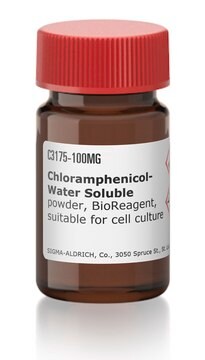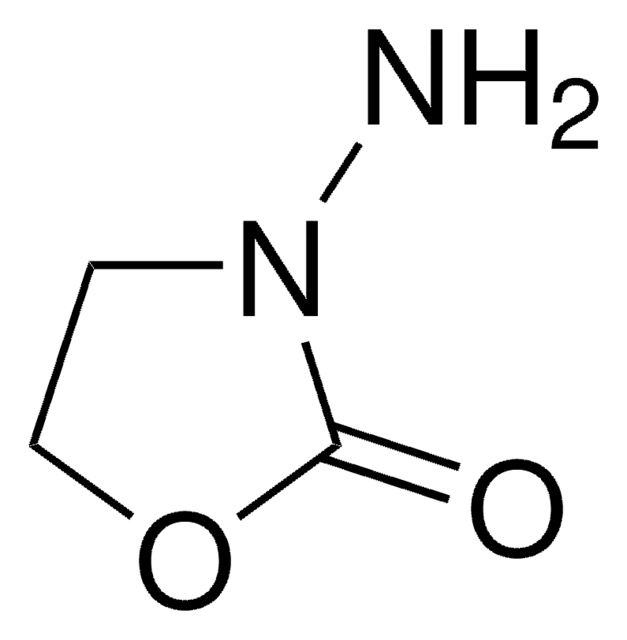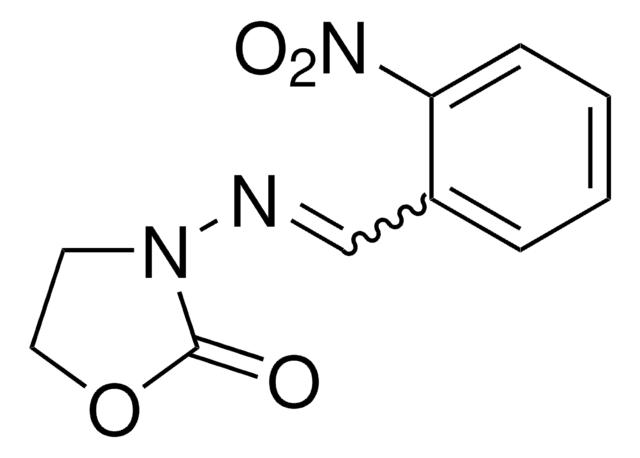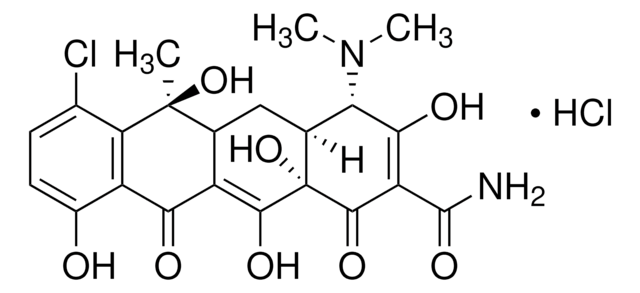31667
Cloranfenicol
VETRANAL®, analytical standard
Sinônimo(s):
D-()-treo-2,2-dicloro-N-[β-hidroxi-α-(hidroximetil)-α-(hidroximetil)-4-nitrofenetil]acetamida, D-(−)-treo-2,2-dicloro-N-[β-hidroxi-α-(hidroximetil)-β-(4-nitrofenil)etil]acetamida, D-(−)-treo-2-dicloroacetamido-1-(4-nitrofenil)-1,3-propanodiol, Cloromicetina
About This Item
Produtos recomendados
grau
analytical standard
Nível de qualidade
linha de produto
VETRANAL®
Ensaio
≥98% (HPLC)
prazo de validade
limited shelf life, expiry date on the label
técnica(s)
HPLC: suitable
gas chromatography (GC): suitable
pf
149-153 °C (lit.)
solubilidade
H2O: insoluble 100% (practically)
aplicação(ões)
clinical testing
formato
neat
cadeia de caracteres SMILES
OC[C@@H](NC(=O)C(Cl)Cl)[C@H](O)c1ccc(cc1)[N+]([O-])=O
InChI
1S/C11H12Cl2N2O5/c12-10(13)11(18)14-8(5-16)9(17)6-1-3-7(4-2-6)15(19)20/h1-4,8-10,16-17H,5H2,(H,14,18)/t8-,9-/m1/s1
chave InChI
WIIZWVCIJKGZOK-RKDXNWHRSA-N
Procurando produtos similares? Visita Guia de comparação de produtos
Categorias relacionadas
Descrição geral
This grade has the standard for Supelco MIP SPE cartridges. For more information request Supelco Literature T407075, T706024
Aplicação
Ações bioquímicas/fisiológicas
Modo de resistência: O uso da cloranfenicol acetiltransferase acetila e inativa o produto.
Espectro da ação antimicrobiana: Este é um antibiótico de amplo espectro contra bactérias gram positivas e gram negativas e é usado principalmente para fins oftálmicos e veterinários.
Atenção
Nota de preparo
Informações legais
produto relacionado
Palavra indicadora
Danger
Frases de perigo
Declarações de precaução
Classificações de perigo
Carc. 2 - Eye Dam. 1 - Repr. 2
Código de classe de armazenamento
11 - Combustible Solids
Classe de risco de água (WGK)
WGK 3
Equipamento de proteção individual
Eyeshields, Gloves, type P3 (EN 143) respirator cartridges
Escolha uma das versões mais recentes:
Já possui este produto?
Encontre a documentação dos produtos que você adquiriu recentemente na biblioteca de documentos.
Os clientes também visualizaram
Nossa equipe de cientistas tem experiência em todas as áreas de pesquisa, incluindo Life Sciences, ciência de materiais, síntese química, cromatografia, química analítica e muitas outras.
Entre em contato com a assistência técnica










